The Western Honey Bee has many pests and diseases that beekeepers must control to maintain their bees’ health. Among these pests are Small Hive Beetles.
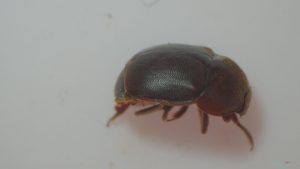
What are Small Hive Beetles and how I can Identify them?
Small Hive Beetles are a pest of honey bees that are originally from sub-Saharan Africa. In 1996, Small Hive Beetles appeared in South Carolina, Georgia, and Florida, but nowadays it has spread to much of the United States. They are very tiny (3mm wide and approximately 5.5 mm long) dark brown/black beetles that infest bee colonies in search of food resources. They are often found in the cracks and crevices inside honey bee colonies where they hide from bee aggression. The bees will keep these beetles in these cracks and crevices away from resources such as pollen, honey, and brood. On the other hand, the beetles have developed a way to fool the bees into feeding them by using their antennae to rub the bees’ mandibles and induce the bees to regurgitate, feeding the beetles in the process.
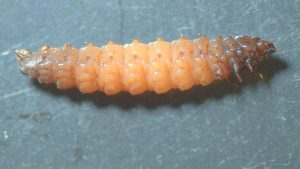
What is their life cycle?
Small Hive Beetle females lay eggs inside the hive in cracks, crevices, or brood cells. These eggs are a pearly white color and approximately 1 mm long. Once the larvae (approximately 7 mm long) hatch from the eggs, they immediately start feeding on pollen, honey, and brood. They tunnel through the comb while feeding. Once the larvae are ready to pupate, they leave the hive and go to the ground for their pupa state. Once the adults emerge from the ground, they search for a honey bee hive and the life cycle repeats itself.
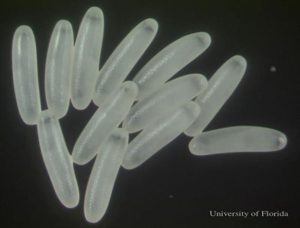
How can they damage my hives?
It is common to see Small Hive Beetles in honey bee colonies. In strong colonies, Small Hive Beetles cause little to no damage because the bees tend to keep them in check. On the other hand, large infestations, specifically in weak colonies, can cause serious damage to honey bees. Small Hive Beetles can cause significant damage to brood, and other resources while feeding. They can cause honey to ferment causing it to be unfit for human consumption. Small Hive Beetles affect live colonies and equipment with stored honey.
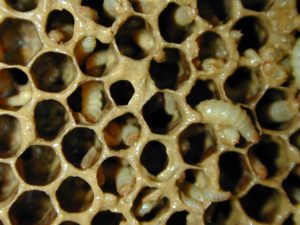
How can I control them?
Biological control:
The best method of control is to have a strong healthy bee colony. Bees tend to remove the beetles themselves from the hive. Although beetles are faster, if your colony has a good number of bees they will work together to fight and remove the beetles out of the hive.
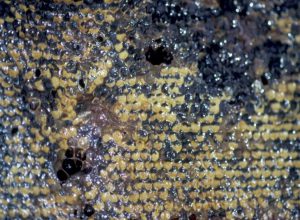
Mechanical control:
If control is needed, beekeepers can utilize a better beetle blaster trap which is a trap that hangs between the frames that will have apple cider vinegar (attracts the Small Hive Beetles) and oil which kills the beetles. Another method is using a tray trap, which is a trap that slides itself on the bottom board of the hive filled with oil that kills the beetles. Another method is to use Swiffer sheets or shop towels that are placed on top of the frames trapping the beetles in them.
Cultural Control:
Beekeepers can place the hives directly under the sun and away from shady areas. This has been proven to decrease the number of beetles present in a colony. Another thing beekeepers can do is avoid having extra space on their hives, for example: add frames according to your colony growth (if you know that your hive is utilizing only 5 frames don’t add a 6 frame until needed because this extra space could be a place for beetles to hide and colonize).
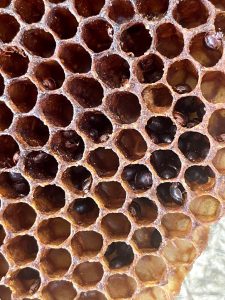
Conclusion
Small Hive Beetles could be a serious problem in large-infested hives. It is important to keep your bees healthy to avoid these infestations, and when proper control is needed utilized what is most effective depending on the situation.
For more information about small hive beetles please access this “Ask IFAS” publication:
SMALL HIVE BEETLE, AETHINA TUMIDA MURRAY (INSECTA: COLEOPTERA: NITIDULIDAE)
Or watch the following video from the UF Honey Bee Research and Extension Lab:
University of Florida is an Equal Opportunity Institution
 0
0
